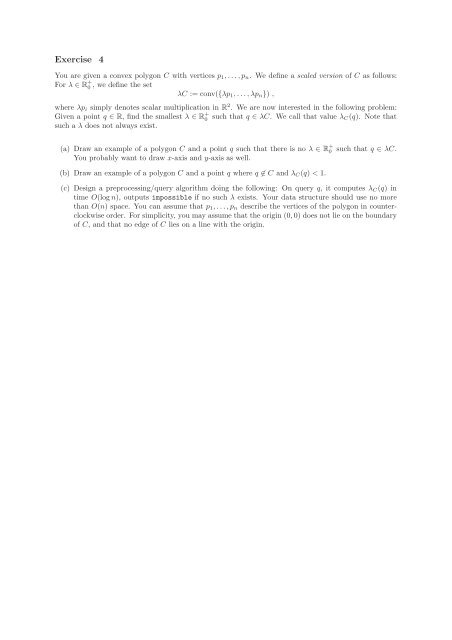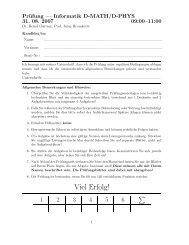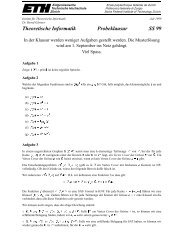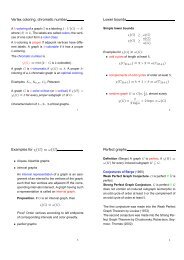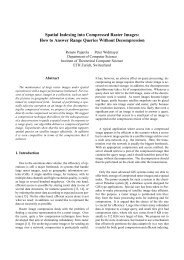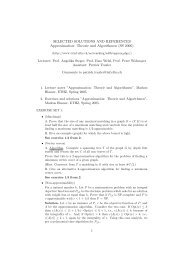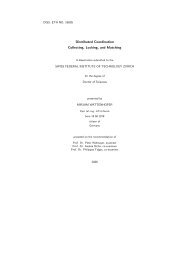Algorithms, Probability, and Computing Fall 09 Mid-Term Exam
Algorithms, Probability, and Computing Fall 09 Mid-Term Exam
Algorithms, Probability, and Computing Fall 09 Mid-Term Exam
You also want an ePaper? Increase the reach of your titles
YUMPU automatically turns print PDFs into web optimized ePapers that Google loves.
Exercise 4<br />
You are given a convex polygon C with vertices p1, . . . , pn. We define a scaled version of C as follows:<br />
For λ ∈ R + 0 , we define the set<br />
λC := conv({λp1, . . . , λpn}) ,<br />
where λpi simply denotes scalar multiplication in R 2 . We are now interested in the following problem:<br />
Given a point q ∈ R, find the smallest λ ∈ R + 0 such that q ∈ λC. We call that value λC(q). Note that<br />
such a λ does not always exist.<br />
(a) Draw an example of a polygon C <strong>and</strong> a point q such that there is no λ ∈ R + 0 such that q ∈ λC.<br />
You probably want to draw x-axis <strong>and</strong> y-axis as well.<br />
(b) Draw an example of a polygon C <strong>and</strong> a point q where q ∈ C <strong>and</strong> λC(q) < 1.<br />
(c) Design a preprocessing/query algorithm doing the following: On query q, it computes λC(q) in<br />
time O(log n), outputs impossible if no such λ exists. Your data structure should use no more<br />
than O(n) space. You can assume that p1, . . .,pn describe the vertices of the polygon in counterclockwise<br />
order. For simplicity, you may assume that the origin (0, 0) does not lie on the boundary<br />
of C, <strong>and</strong> that no edge of C lies on a line with the origin.


